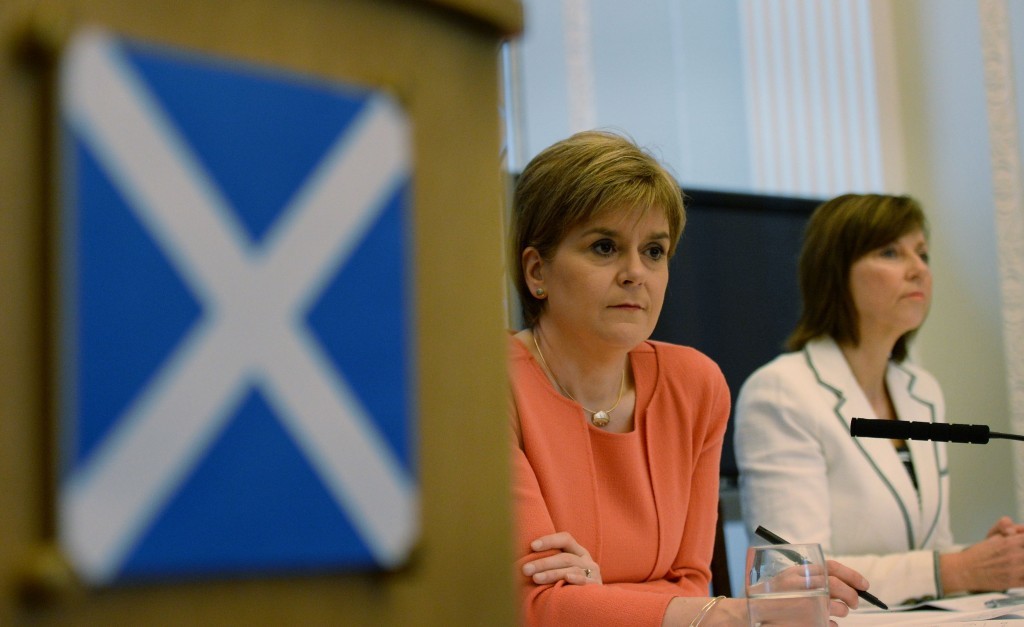
Unemployment has fallen by 25,000 in three months, bringing the jobless total in Scotland to the lowest level since 2008.
Figures for the period June to August showed 127,000 people were out of work, 44,000 fewer than the same period in 2015.
The unemployment rate was recorded as being 4.6%, lower than the rate of 4.9% for the UK as a whole.
While unemployment fell, the Office for National Statistics data also showed employment declined over the same period.
Between June and August 2016 the number of people in work decreased by 8,000 to 2,618,000 – although this total was still 7,000 higher than the same period in 2015.
While Scotland had a better unemployment rate than the UK, the employment rate was worse, at 74% compared to 74.5% across Britain.
There was also a slight increase in the number of Scots out of work and claiming jobseeker’s allowance, which rose by 600 over the month to 55,000 in September – but that total is significantly lower than it was the previous year, having fallen by 15,500 from September 2015.
Scottish Secretary David Mundell said: “I am pleased to see unemployment falling again in Scotland and it is now at its lowest level since 2008.
“But it is worrying that employment is down and more people are dropping out of the labour market in Scotland when the rest of the UK is seeing employment up.”
He demanded action from the SNP administration at Holyrood, saying: “The levers to shape the Scottish economy are there for the Scottish Government to pull.
“They need to start focusing on the day job and how they can use their new powers to support the Scottish economy.
“Because these are not just statistics – behind the fall in employment and rise in economic inactivity are thousands of people in Scotland who deserve the security and opportunity that a job brings.”
Holyrood employability minister Jamie Hepburn said: “Despite continuing economic concerns following the EU referendum result, these latest statistics show our policies and investment are helping to reduce unemployment.
“We will not be complacent and are absolutely committed to taking action to tackle inequalities and increase employment rates.”
Mr Hepburn made the comments during a visit to Schofield Dyers and Finishers, which employs 55 people in Galashiels in the Borders.
He said he was “pleased the latest labour market statistics show encouraging signs for our economy with unemployment levels falling and Scotland outperforming the rest of the UK in terms of female employment, unemployment and inactivity rates”.
He continued: “Our labour market strategy sets out how we will put fairness at the heart of our drive to boost the economy, create jobs and remove any barriers to work, and our planned £500 million Scottish Growth Fund will support businesses during these uncertain times.
“While we are doing all we can to boost our economy, it’s clear that we need to protect Scotland’s relationship with the EU so we can build on these positive economic trends, rather than put this progress and Scottish jobs under threat.”
Labour’s economy spokeswoman Jackie Baillie voiced concerns about the number of Scots who are “economically inactive”.
She said: “It is encouraging to see a large fall in unemployment but the rise in economic inactivity is concerning.
“There are many reasons for economic inactivity, including studying and looking after family members, but the data shows that 190,000 Scots want a job.
“Women, in particular, appear to be struggling as a result of the economic problems facing our country.
“There are now real concerns that as the reality of the Tories’ reckless Brexit gamble becomes clear, there is worse to come in the months ahead.
“The last thing Scotland needs is the further economic uncertainty that a second independence referendum would cause.”
Liberal Democrat economy spokeswoman councillor Carolyn Caddick said: “Any fall in unemployment is welcome but there is no room for complacency here.
“The impact of Brexit is starting to bite, key industries like the energy sector are still facing enormous challenges and the number of people in work is flat-lining.”
Liz Cameron, chief executive of the Scottish Chambers of Commerce, said the figures showed a “mixed picture”, adding: “The large fall in unemployment is good news but overall levels of employment in Scotland have fallen, economic inactivity is rising, as has the number of those claiming benefits.
“Against a background of Scottish economic growth which has lagged below overall UK growth levels since April 2015, it is clear that challenges remain to be addressed, including the need to grow Scotland’s productivity, which remains low by international standards.”
Scottish Trades Union Congress (STUC) general secretary Grahame Smith said: “Ostensibly, the small increase in employment and significant fall in unemployment look like good news but these are insufficient to compensate for a surge in inactivity.
“This is true both for the last quarter and the year to June-August. There are now 34,000 more women economically inactive than at this time last year.
“With already weak growth and the impact of lower investment post-EU referendum yet to become apparent, the STUC is sceptical that the Scottish labour market will improve through the remainder of 2016.
“A major concern for next year is that real wages will once again start to fall as inflation picks up and wage settlements reflect pre-Brexit uncertainty.
“In these circumstances, it is essential that the Chancellor uses next month’s autumn statement to stimulate jobs and growth.”
